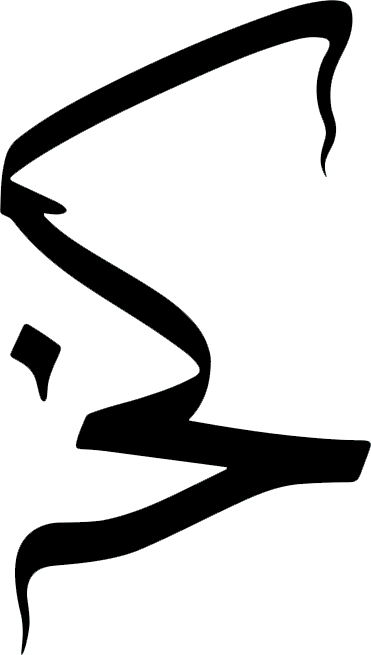
Issue 0. MEDIUM
In a world saturated with content and roiling with uncertainty, whom do you trust? We increasingly search for interpreters for our bombarded present, soothsayers divining untamed futures. The medium through which information is conveyed, now, as ever, is imbued with these sacred characteristics. It can help you tell right from wrong. It is a stamp of authenticity, or else a libelous scourge. Except if it’s your grandma. Remember, she’s always right.
Issue 1. DISORIENT
To DISORIENT is to actively break categories down—to try our best to capture the infinity of experience in the region. It’s an act of harnessing instability’s power, an acceptance that the quest for understanding is never over. Discomfort and confusion, rather than obstacles, are sources of wisdom. DISORIENT is the antidote to the crisis of representation—when individuals, in all of their incoherence, can represent themselves.
Issue 2. PASSAGE
PASSAGE illuminates the power of the in-between. It makes space for surprises—perhaps even beckoning them. It helps us remain open and welcome the unforeseen. Our region is an ongoing migratory network with an ancient history, in which most of us—including many of the editors of this magazine—have participated. Some journeys are more violent than others. Some are voluntary, while others are the results of circumstance. But with every voyage comes a liminal moment wherein the anxiety subsides. While we move, wait, and reflect, an eerie quiet settles in, forcing us to confront our unknowns: a ritual that is, perhaps ironically, familiar and intimate.
Issue 3. SOURCE
SOURCE interrogates our overlapping roots, seeking to broaden our notions of the archive. Dynasties come and go, obscuring our access to the past. To ask questions, we often turn to libraries, museums, and monuments—which, unlike people, do not wander. But where can we look to find the wanderers? Which objects tell their stories?
issue 4. EDGE
Cover art by Knar Hovakimyan.
Editor's Note
As a child, I rarely found solace in my difference; mainly solitude. I, like many, am muhajun (مهجن). Masked by the foliage of accents, slang, body language, and adab, I have had to learn how to navigate the environments around me. But at what cost?
In our previous issue, we probed the constitution of identity. To what extent are our subjectivities and relationships formed by the governing structures we exist within? What about the food we eat or the layout of the geography? By focusing on points of overlap, we necessarily investigate parts that don’t; the contours, the limits, the boundaries of any form of distinction, institutionalized or not.
EDGE was thus born out of the ambiguous relationship between representation and precarity. Does more visibility make the marginalized more vulnerable? How do we describe the relationship between the periphery and center? Can they exist independently? We began without always knowing the question, but guided by our memories, observations, crossing of boundaries, cultural, emotional, gendered, national, religious.
Khurasan, a cultural and intellectual hub during the Islamic golden age, was divvied up and appropriated by proceeding powers into the complex fringe it is today. Yerevan, which has grappled most recently with visibility, became home to a protest movement engendering Armenian art around the globe. And Fairbanks, the edge of the world, is home to a small community of Kurds from Faraman who escaped persecution—and an unorthodox meeting point for an Iranian academic to reconnect with his childhood.
The contributors to this fifth issue reach beyond the center to examine the divided, the contained, and the container. They delve into times of transition, and the risks that follow it. They reveal the hardships that come with the margins, and the strength that accompanies such struggle. They show that we meander through memory and home—fluid experiences engendered by colors, cloth, coins: sensations with which to approach the peripheral perspective. Most importantly, they demonstrate that familiarity with the edge unlocks a power of its own: we are our own centers.
Featuring
ATOPIA: THE MIND IN WINTER
By Darius Rejali
MEMOIRS THROUGH POKUA’S WINDOW
By Gideon Appah
MAPS OF VELVET
By Suzana Poghosyan
My Blossomed Potted Plant
By Jennifer Saparzadeh
URBAN DECAY
By Sheyda Allahverdiyeva
GOING HOME
By Leena Aboutaleb
NAMEDROPPING
By Samuel Tafreshi
10 AM
By Yasmine Badaoui
AN IRAQI INSHALLAH
By Ziad Halub
IFTAR
By Mahdi Ali
FREEDOM FIELDS
By Farrah Fray
THE VALLEYS OF BALTISTAN
By Amara Waseem
DRAPED
By Lizzy Vartanian Collier
SHIMAGH
By Meshal Al-Obaidallah
HIKAYAT
By Nour Elbery
US AND THEM
By Celia Shaheen
LIPSTICK VS AYATOLLAH
By Monica Zandi
WHAT HAPPENS NOW?
By Sama Shahrouri
FOREIGN LANDSCAPES
By Tamer El Aswad
NO-MAN’S LAND
By Lina Fansa
HYPOTHETICAL BODY EQUATION (WITH CATS)
By Nour Kamel





